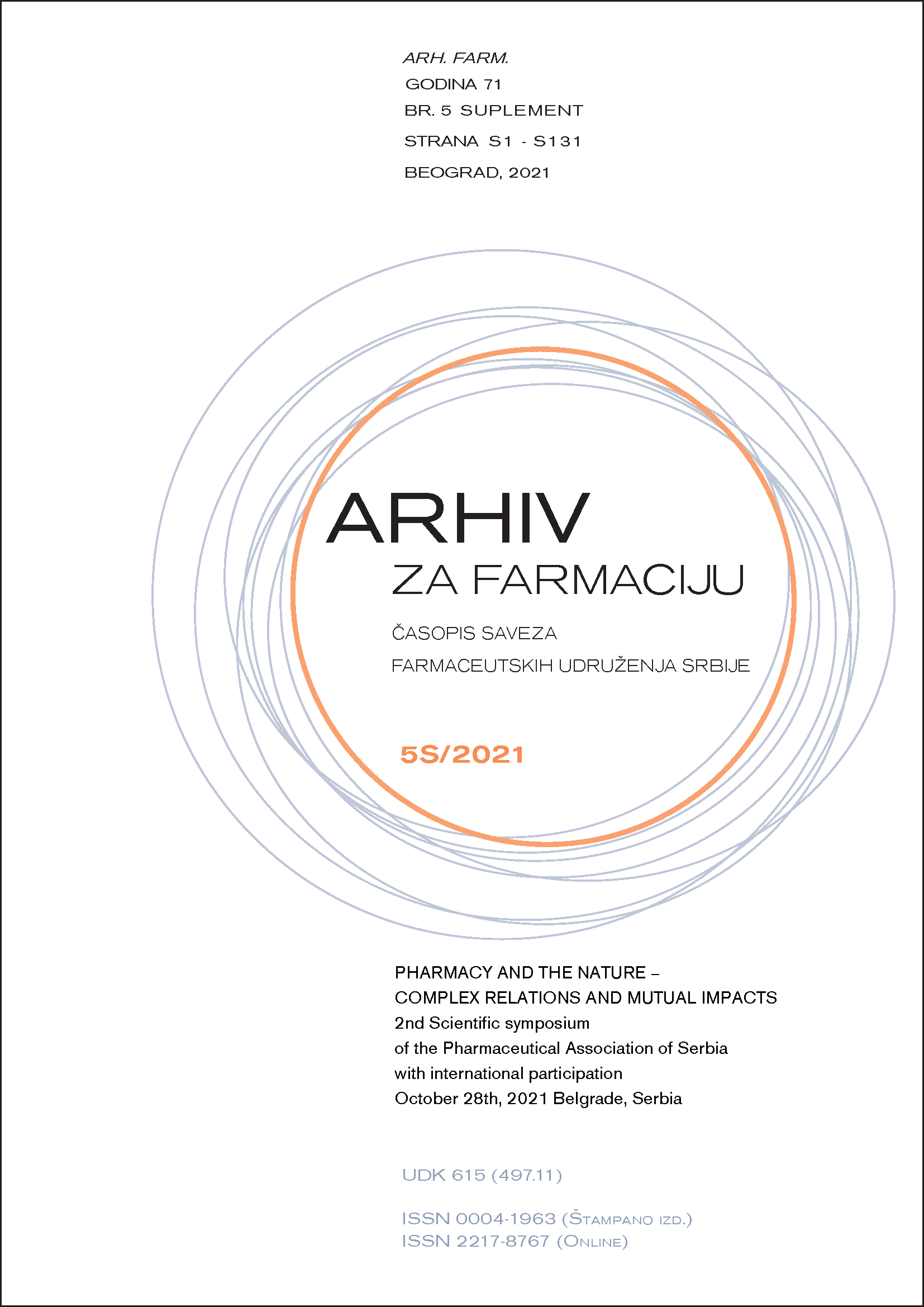ENVIRONMENTAL IMPACT OF DRUGS TRANSFORMATION PRODUCTS
Abstract
The use of drugs in the environment can produce different transformation products (TPs) under the influence of different environmental factors. Drugs contain one or more active components as well as many excipients. As the newly formed TPs of pharmaceuticals can be more stable in nature and more toxic than their parent components, the pathways of transformation, the identification of TPs along with the environmental impact have become an important research topic. This study presents a brief summary of the occurrence and ecotoxicological risks of commonly found transformation products of pharmaceuticals in the environment. The purpose of this review is to point to the issue of the increasing use of drugs and their occurrence in the environment, in order to provide a perspective that will prove useful during the further development of environmental strategies. In addition, this article also analyzes the environmental impact of the excipient, focusing specifically on TPs and their impact on the environment.
Many studies have been published over the last few years that indicate a number of potential toxic effects on human health and environment due to drugs and their TPs in the environment. Some key categories of harmful excipients and their TPs commonly used in pharmaceutical dosage forms are presented here. Azo dyes have been shown to have toxic, mutagenic and carcinogenic effects on aquatic animals. Creating biotransformation products of these excipients can, as well as parent products, cause various damage to exposed organisms. Due to its high persistence in nature, it is possible that it may accumulate in natural waters and cause higher or long-term adverse effects. Surfactants are another group of excipients detected in the environment that could be potential environmental pollutants. The toxic effects of surfactants have been proved in numerous studies. Different types of surfactants show different toxic effects in the environment. During the decomposition process, the preservative bronopol produces two TPs, which have been confirmed to be more tenacious in the environment and more toxic than the parent product. Another preservative with potency as an environmental risk is phenol used in vaccines and consumer products including mouthwashes, throat lozenges, and throat sprays. The unexpected reaction of phenols with hydroxyl radicals and UV light form toxic TPs, oxoenal and enedial, which suggests that these reactions produce these toxic TPs in other situations, including sunlit surface waters and within living cells.
Based on the results presented, there is a need to reduce the amount of drugs in the environment, including excipients by specific strategies. These strategies need to be developed to first identify TP drugs, improve risk management capabilities, and finally reduce the amount of potential drugs entering the environment.

